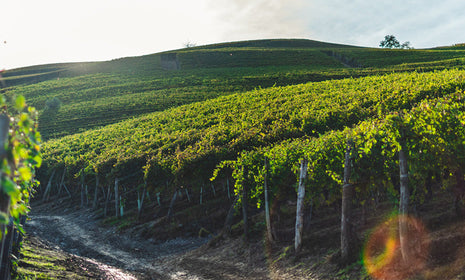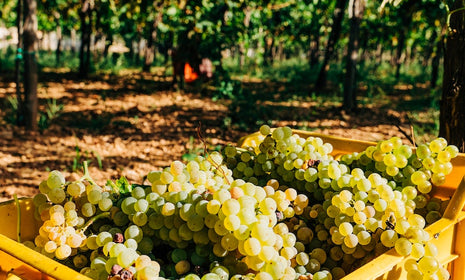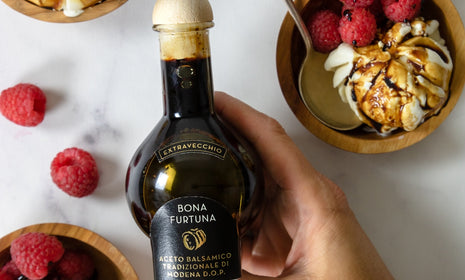Framed to the northwest by the towering rocks of the Alps and cradled to the south by the rounded slopes of the Apennine mountains, Piedmont’s diverse and varied terrain lends itself to varied and diverse wine growing opportunities. Producing wine as early as the 6th century, this distinct and beloved wine region has been recognized for its bold and tannic reds for centuries.

With warm weather cycling up from the Mediterranean, and cold temperatures moving off the icy slopes of the Alps, Piedmont experiences the climatic temperature swings so crucial to the development of good wine grapes. With this climatic dichotomy, cool fog blankets the slopes of the Apennines in the morning, and is bathed in hot sun by midday. As a result, the Cuneo, Asti, Alessandria and Torino provinces are among the most favored in Piedmont. Heading north to the cooler mountainous Alps, the Alto Piemonte regions of Verbano, Cusio, Ossola and Novara produce wines with high acidity and light bodies that are gaining more and more popularity by the day.

REDS

NEBBIOLO
At first glance, Nebbiolo wines look light and appear to be very similar to a traditional Pinot Noir. A sip of the powerful, bold, and tannic wine, however, will quickly alert you to the true beauty of what’s inside. Grown in Piedmont since at least the 13th century, Nebbiolo and Piedmont are synonymous with one another, and the stunning grapes are rarely found outside of Piedmont. Considered to be a “terroir-expressive” grape, Nebbiolo embodies the essence of the earth, climate, and soils from which it grows. As a result, the wines these grapes produce greatly depend on where they are grown. For example, Nebbiolo grapes grown on the sloping, clayey soils of Langhe add complexity and structure to the Barolos and Barbarescos they’re used for. In contrast, Nebbiolo grapes grown in the newly celebrated Alto Piemonte region gain minerality and acidity from the sandy earth and cool climate.
Pair with: Polenta alla spianatora with short rib ragù.
BARBERA
One of Italy’s most widely planted grapes, Barbera’s have grown on the sloping hills of Monferrato, located in the modern province of Alessandria, since the 13th century. Known for producing high-yields, the sharp acidic grape has traditionally been used in blends alongside more tannic varieties to produce bulk table wines that are cheap and readily consumed. Through careful cultivation, viticulturalists in Piedmont’s subregion of Asti are able to control lower yields, concentrating the grape’s notes of fresh blackberry and cherry. Aged in oak barrels, these wines gain complexity to compliment their full-bodied and acidic finish. Today, Barbera d’Asti is a DOCG (Denominazione di Origine Controllata e Garantita), a classification that guarantees the geographical sourcing of grapes and the highest control and quality of production.
Pair with: Fresh summer tomato salads, the Forager Pizza, and Bona Furtuna’s Spotify Pizza Night playlist.
DOLCETTO
Known as a primarily Piedmontese wine, Dolcetto is celebrated for its approachability and consistency. Unlike Barolo, Barbaresco and Barbera, its bold brothers, this gentler wine can be opened right away and at any occasion. Notably balanced, Dolcettos deliver berry fruit on the palate with gentle florals and even gentler tannins, making the wine hold up nicely to a nice fatty steak, but not overwhelming a light summer dinner of salads and vegetables. Keep this often overlooked wine in your back pocket, it’ll come in handy when you’re looking to impress or surprise that one friend who knows oh-so much about wine. We recommend: Paolo Conterno Dolcetto D'Alba.
Pair with: Busiate alla Trapanese, Balsamic marinated steak, or a summery spread of delicious appetizers.
WHITES
MOSCATO BIANCO
One of the oldest known cultivated wine grapes in the world, Moscato Bianco (or Muscat Blanc à Petit Grains in France), is grown all over the world. As a result, Moscatos can vary dramatically. From dry, citrusy and floral renditions to plump dessert wines and sweet, melon-forward sparklings, these widely-planted grapes demand long growing seasons. First brought to Italy by the Greeks over 2,000 years ago, Moscato Bianco grapes contribute over 20% of grapes grown in Piedmont today, primarily to produce the famous Moscato d’Asti DOCG sparkling wines. Sweet, low in alcohol and easily consumed, Moscato d’Asti was traditionally served at lunch or as a digestif.
Pair with: Strawberries and cream, grilled pound cake, and garden parties.
CORTESE
Light, crisp, and moderately acidic, Cortese grapes produce a wine that is perfect for pairing with seafood. Grown in Piedmont since the 17th century, the Cortese grape is famously associated with Cortese di Gavi. These DOCG white wines produced in Piedmont’s Alessandria province are famously crisp, acidic, and mineral with a freshly floral bouquet, and are widely considered to be among the best white wines to come out of Italy.
Pair with: Poached halibut, grilled langoustine, or fresh oysters.
Producing some of Italy’s most sought after internationally distributed wines, Piedmont is a crucial region to understand when learning about Italian wines. It is safe to say that a Piedmontese Barolo has a secure spot in your wine cellar, while an elegant and versatile Dolcetto can be counted on to accompany any meal. As for the whites? None of these cooler climate whites should ever be overlooked.






Be the first to comment